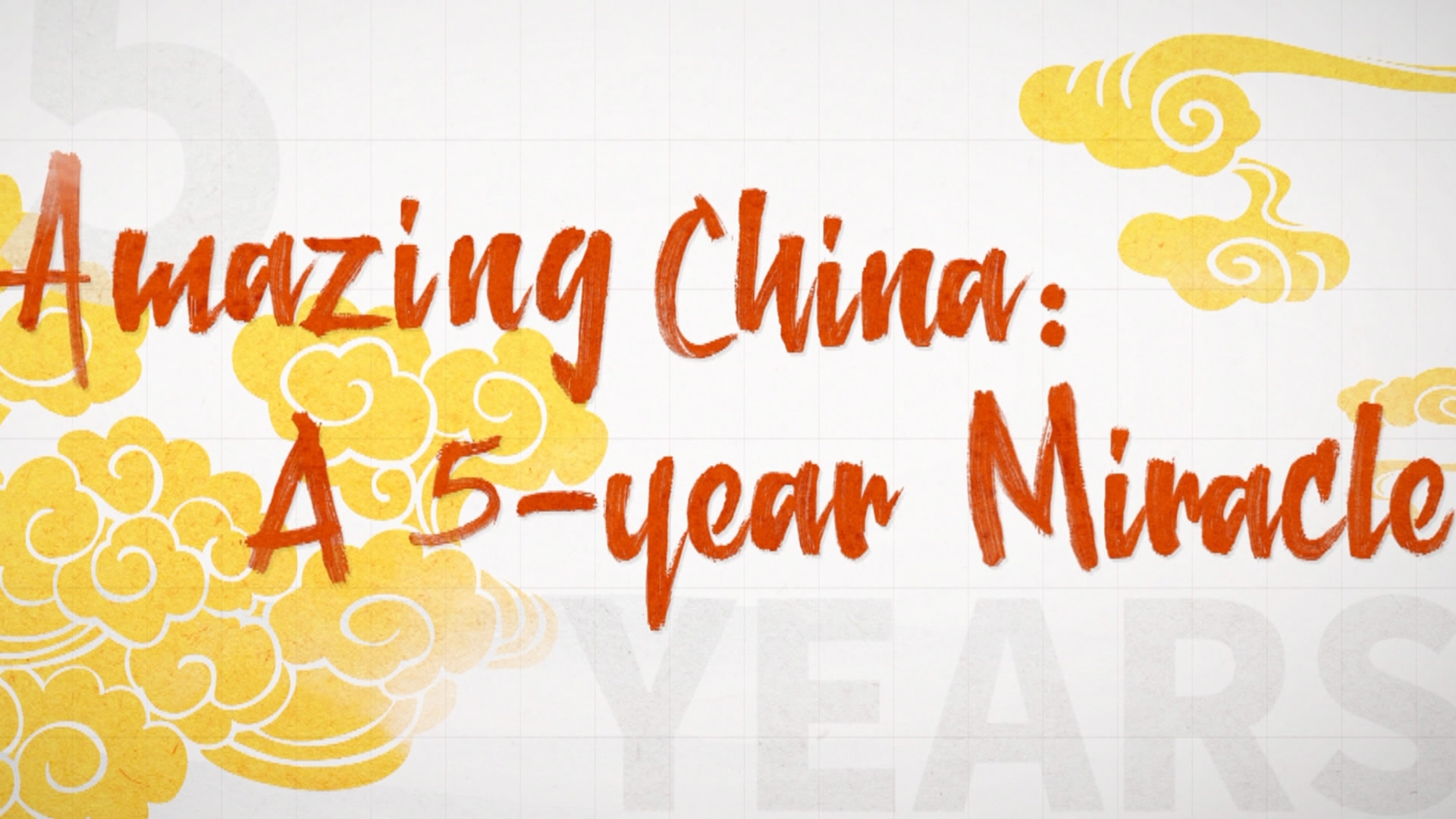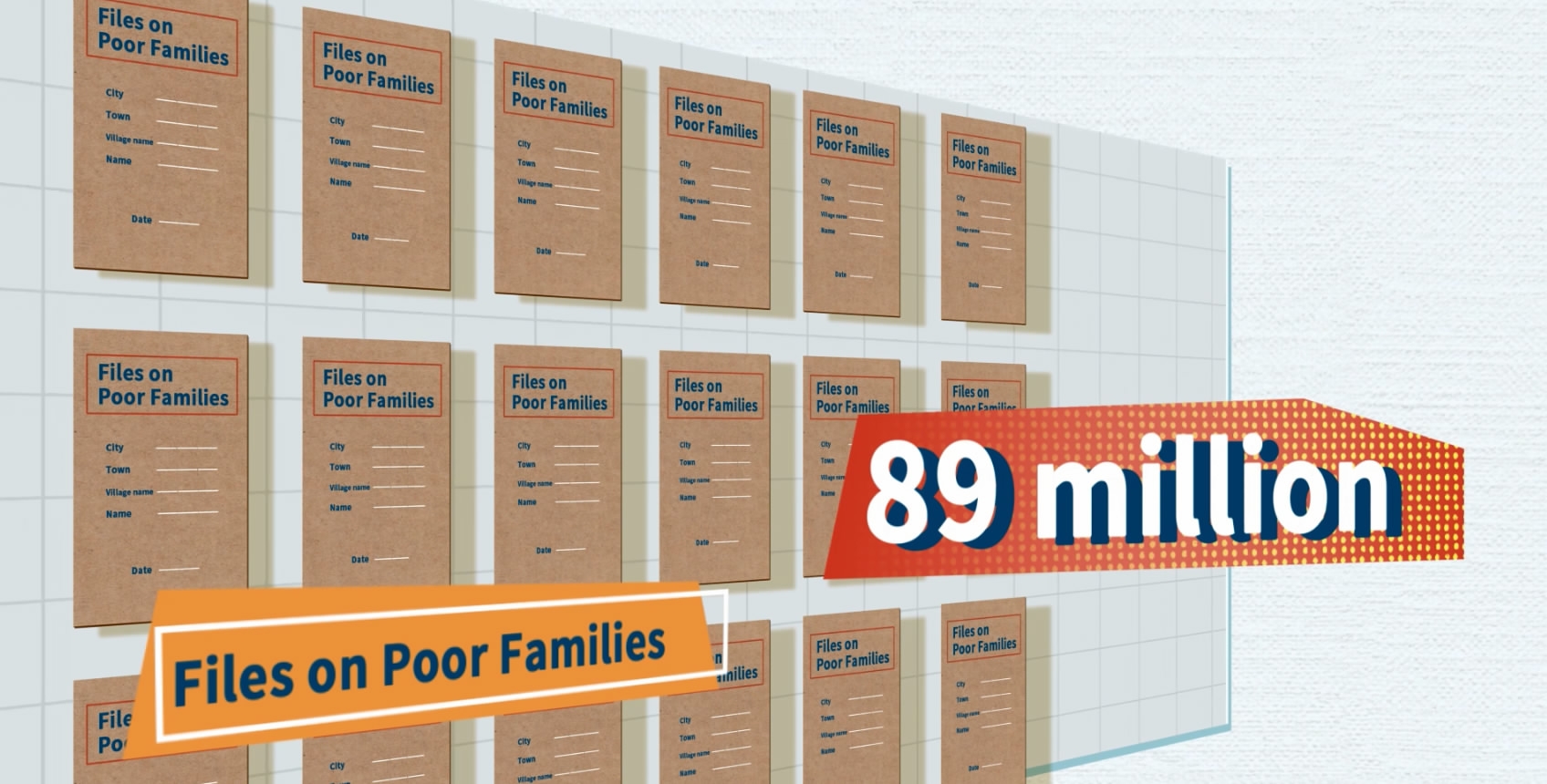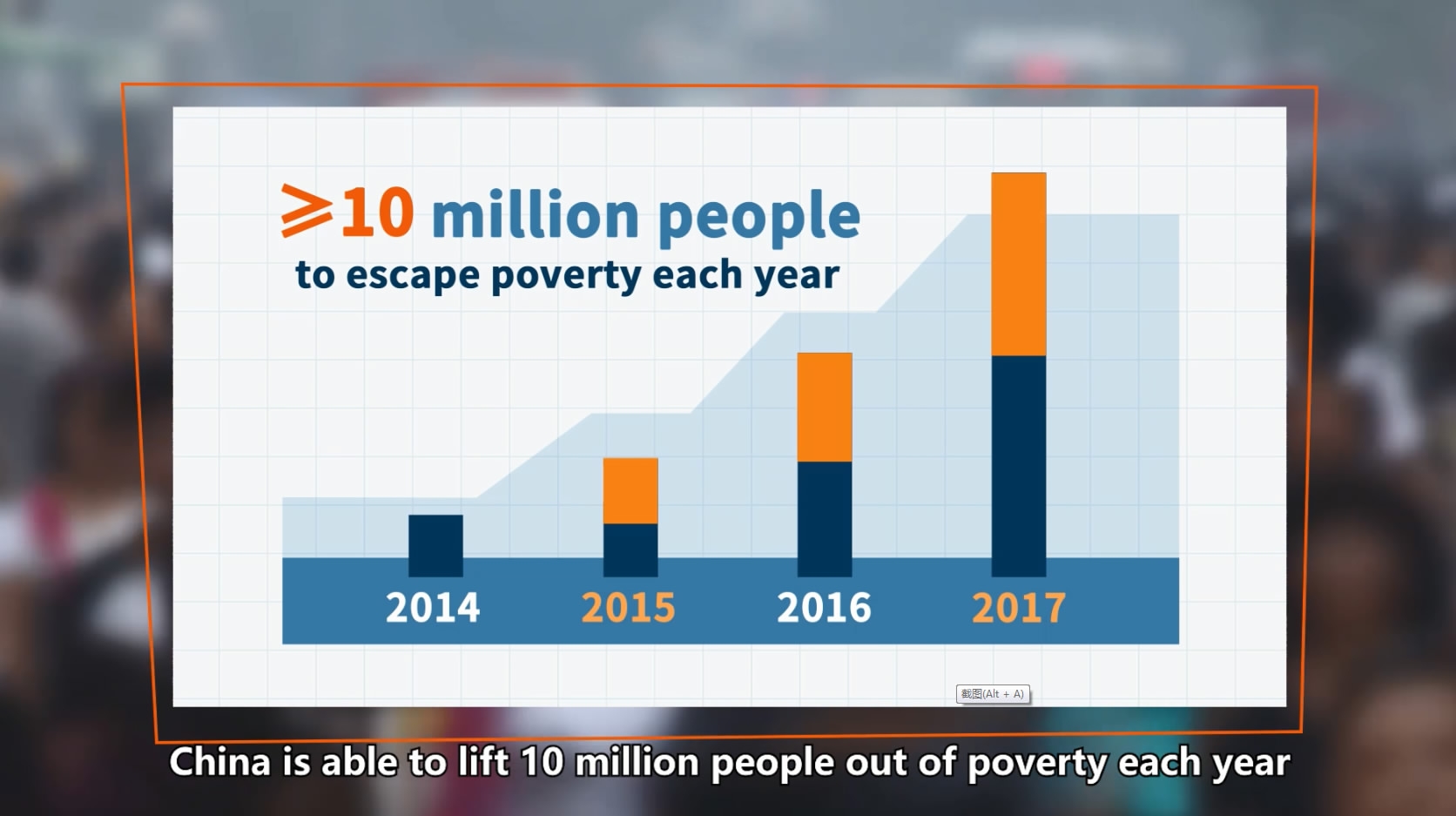
China
14:30, 05-Oct-2017
Amazing China: Five years of targeted poverty alleviation (Part 1)
CGTN

An apple tree stands on a farmland in Renjiawa Village, central China. The first apple of the year fell onto the ground – not quite as magical as the one that inspired Newton, but powerful enough to change the life of the family.
Renjiawa used to be one of the poorest areas in China. For decades the locals had barely earned a living through planting wheat and beans. Thanks to China's program of "Targeted Poverty Alleviation," villagers now are getting subsidies of 2,000 yuan per acre, to plant apple trees which should be more profitable. So when the harvest arrives, it offers farmers a way to escape a life of mere subsistence to embrace real wealth creation.

Apple trees in Renjiawa village /CGTN Photo
Apple trees in Renjiawa village /CGTN Photo
Nowadays, stories like Renjiawa are happening across China.
Since 2013, China has lifted 66 million people – equivalent to the population of France – out of poverty. They have benefited from the "Targeted Poverty Alleviation" strategy put forward by Chinese President Xi Jinping. What is so magical about it?
Most global methods in alleviating poverty are set to distribute money equally to poor people. However, China has made it in a different way, by focusing on an individual or one family out of 1.4 billion people, analyzing the reason behind the poverty for each case and making a "personalized" plan accordingly.

China focuses on one person or one family out of 1.4 billion people and analyzes the poverty reason for each case and making a "personalized" plan accordingly. /CGTN Photo
China focuses on one person or one family out of 1.4 billion people and analyzes the poverty reason for each case and making a "personalized" plan accordingly. /CGTN Photo
China has sent many experienced cadres to poverty-stricken villages to take the position of the secretary of the local committee of the Communist Party of China. They would visit families door by door, talk with family members and record all personal details on their health conditions, incomes, living expenses and their difficulties.
From 2013 to 2015, two million government staff members had been involved in the program. They managed to set up 89 million files on poor families. On this basis, China formulated the same amount of personalized poverty-alleviation plans. Why has China spent so much of its resources on the personalized poverty alleviation?
The causes of poverty behind individual family are different, and so are each individual's conditions, ranging from lack of development funding, working skills, pressure to support elder family members, to no access to highways connecting them to the outside world.
In order to maximize poverty alleviation results, the Chinese government has arranged different funds and customized support according to different situations in villages and families.

Chinese government managed to set up 89 million files on poor families from 2013 to 2015. /CGTN Photo
Chinese government managed to set up 89 million files on poor families from 2013 to 2015. /CGTN Photo
Xi Jinping said that poverty alleviation has to be based on practical factors, has to take measures matching local conditions, make it clear on what to plant and feed, where to increase income, and help villagers look for the best way to get well off.
Some villages are developing tourism while others have built roads and bridges to increase farm products sales. For the elderly unable to work, the government provides living expenses, while those lacking work skills would get access to professional training.
This is how China helps reduce poverty by making personalized plans according to different circumstances of villages and individuals, to achieve "precision" of China's targeted poverty alleviation.
Under such targeted poverty alleviation strategies, China is able to lift at least 10 million people out of poverty each year, and is expected to reach the goal of "eliminating poverty in China by 2020."

China is able to lift at least 10 million people out of poverty each year, and is expected to reach the goal of "eliminating poverty in China by 2020." /CGTN Photo
China is able to lift at least 10 million people out of poverty each year, and is expected to reach the goal of "eliminating poverty in China by 2020." /CGTN Photo
Meanwhile, there are still more than 700 million people living in extreme poverty in the world. How do we create opportunities for development, close the gap between the poor and rich, and work toward a shared wealthy future? Is "Targeted Poverty Alleviation" a good example for the world to study?
Let's continue our discussion in the next episode.
Watch first five episodes of "Amazing China: A 5-year miracle" series below:

SITEMAP
Copyright © 2018 CGTN. Beijing ICP prepared NO.16065310-3
Copyright © 2018 CGTN. Beijing ICP prepared NO.16065310-3